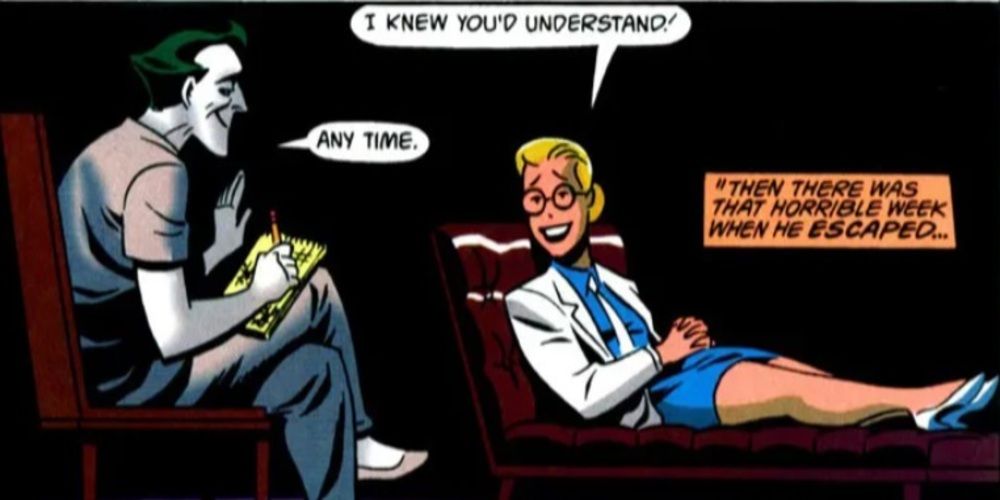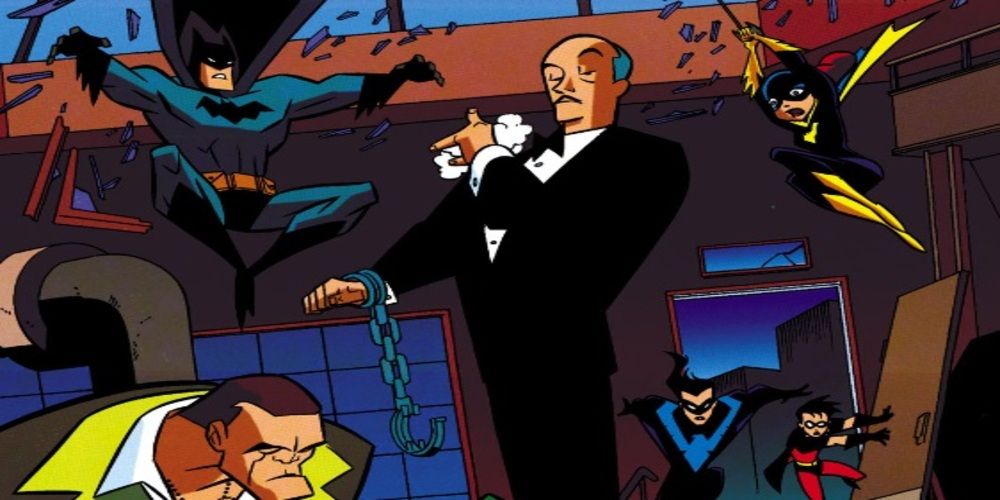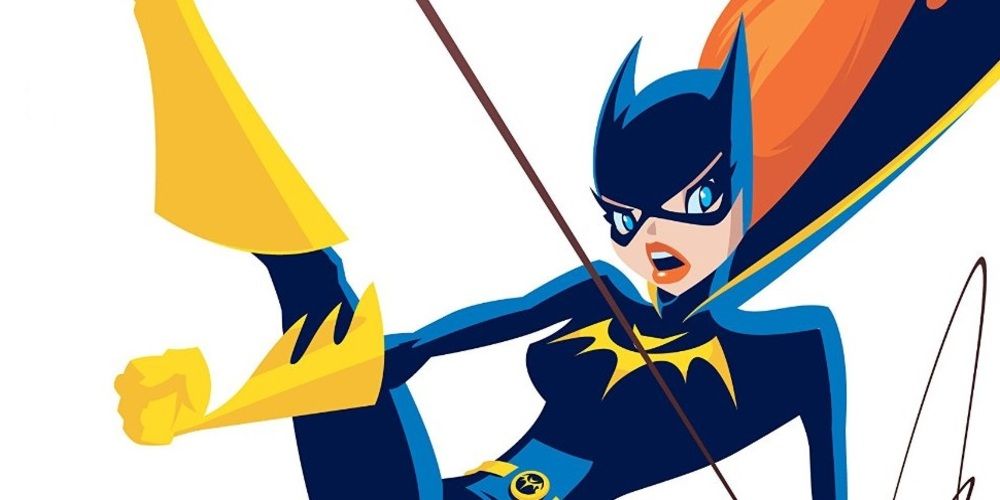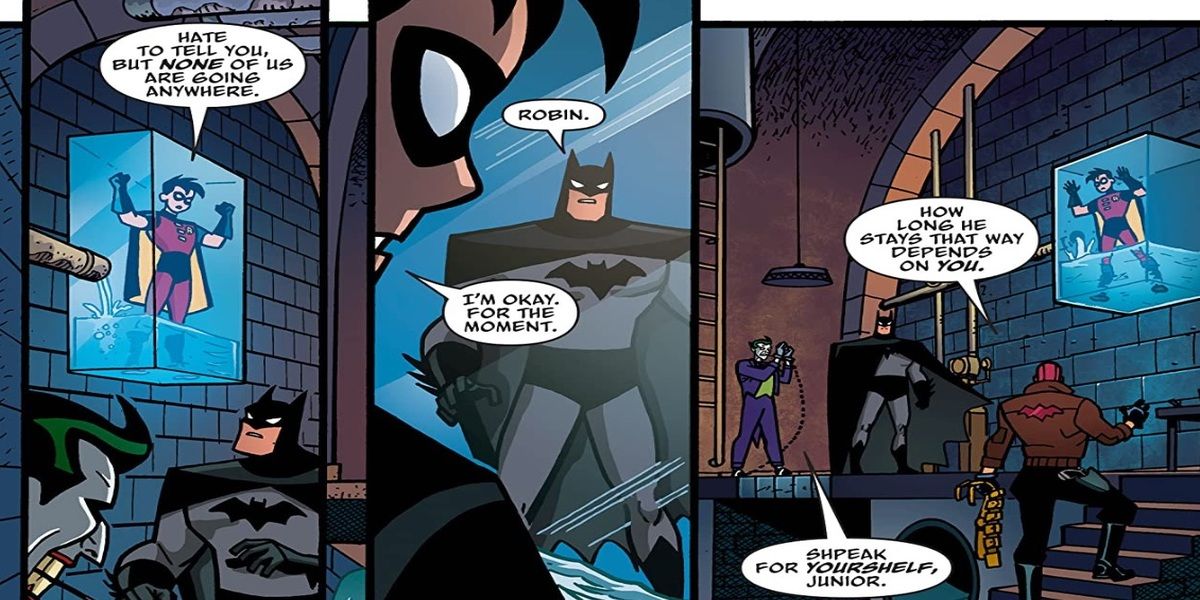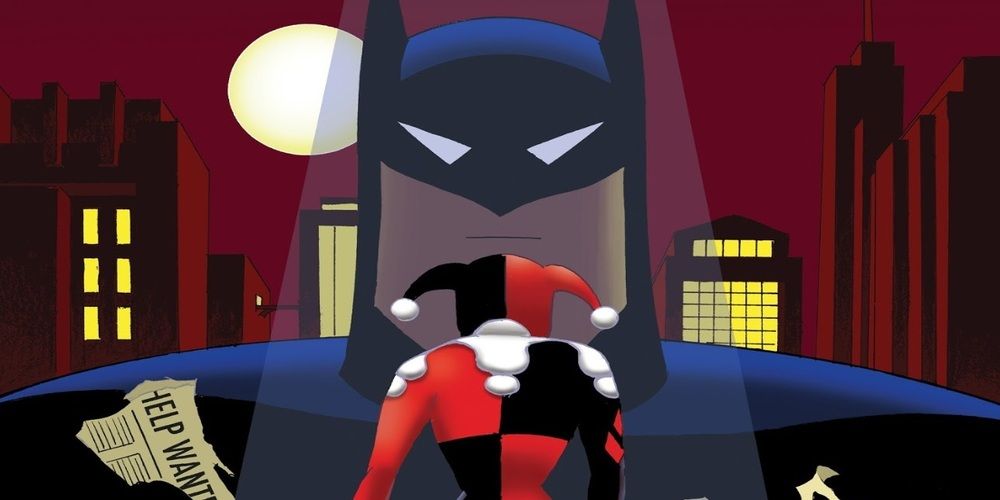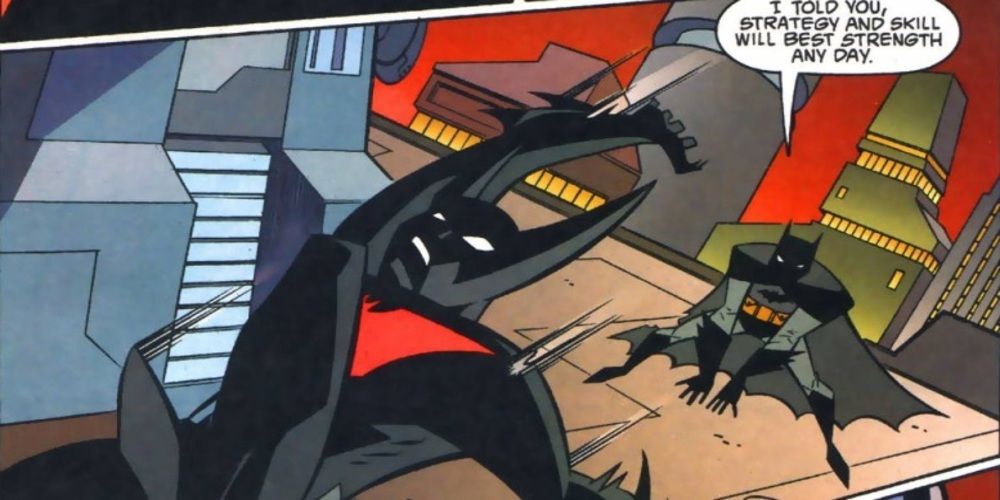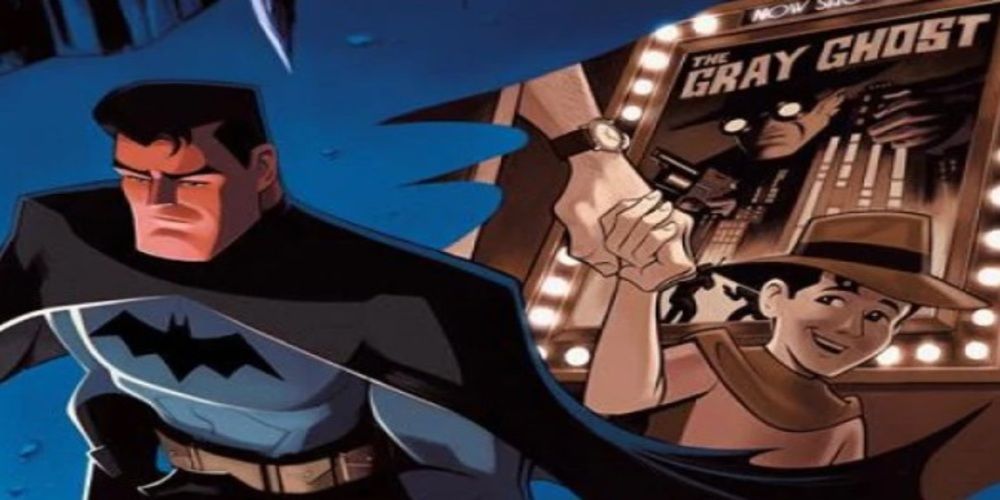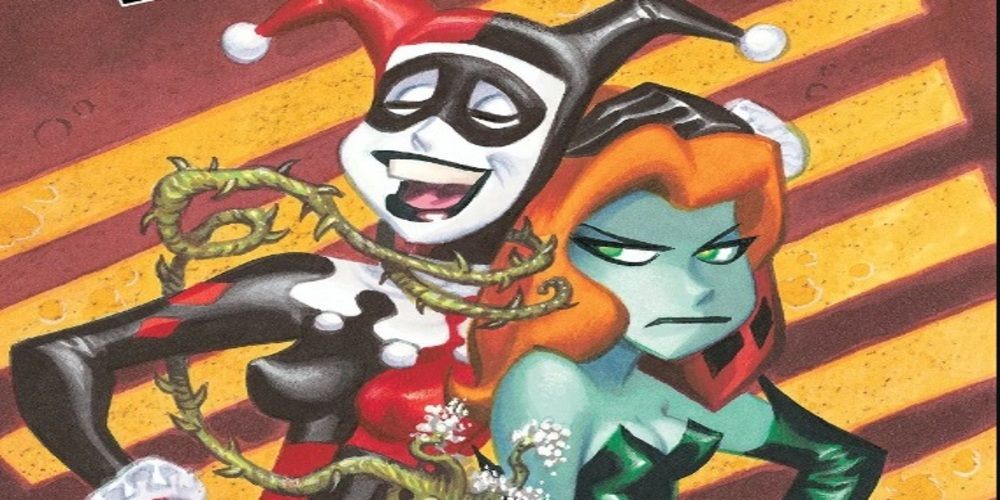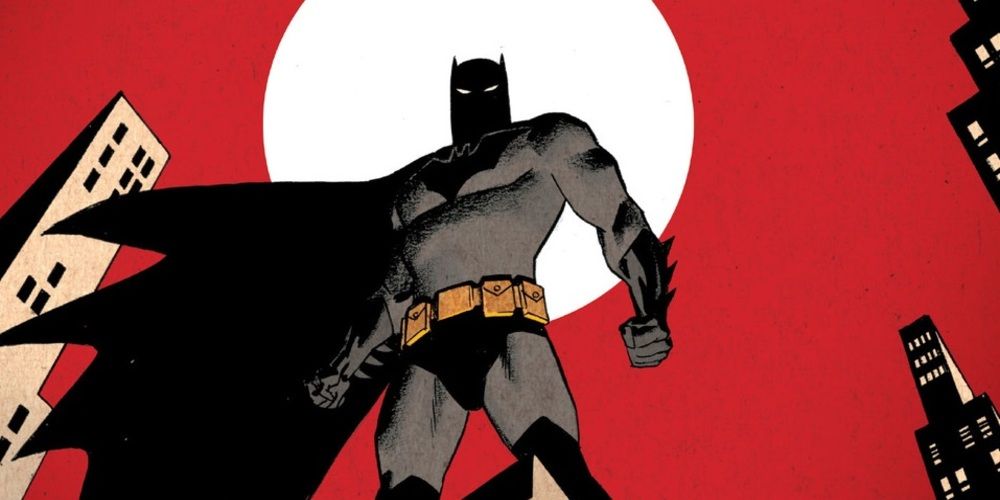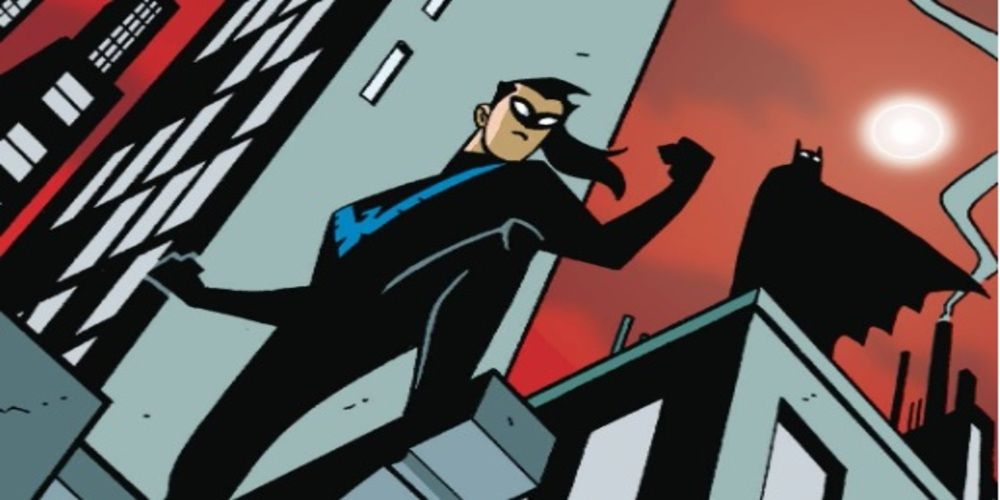The televised launch of Batman: The Animated Series in 1992 changed DC Comics forever. While Batman TAS was the cornerstone in defining the DC Animated Universe (DCAU) for decades to come, its impact on the comics can't be understated. The Dark Knight's animated adventures, overseen by producer Bruce Timm, had a profound influence on Batman's comic book escapades.
Over the years, fondness for the DCAU's Batman grew, and progressively more aspects from the DCAU inspired the comics. The DCAU found its own niche universe within DC Comics, spawning several comic series set within the animated universe. Although geared toward younger audiences, Batman's DCAU comics have plenty to offer readers of all ages.
10 DCAU Comics Captured Harley Quinn's Origin
The Batman Adventures: Mad Love #1, By Paul Dini, Bruce Timm, Rick Taylor, And Tim Harkins
Writer Paul Dini introduced Harley Quinn as the Joker's girlfriend/sidekick in Batman: The Animated Series. It was The Batman Adventures: Mad Love that gave Harley her origin. Dr. Harleen Quinzel was a psychologist interning at Arkham Asylum.
Driven to make a name for herself, Dr. Harleen studied Arkham's most dangerous inmate, the Joker. The Clown Prince of Crime manipulated Harleen, resulting in her falling in love with him and becoming Harley Quinn. Harley's origin presented a new perspective on her, establishing her sympathetic side.
9 Alfred Can Take Care Of Himself
Batman: Gotham Adventures #16, By Scott Peterson, Craig Rousseau, Terry Beatty, Lee Loughridge, And Tim Harkins
Batman has no ally more trusted than Alfred Pennyworth. In Batman: Gotham Adventures #16, Bruce Wayne's butler becomes the target of a kidnapping. Nightwing, Batgirl and Robin rush to save him, but when they arrive, Alfred is freed and his abductor incapacitated. As Batman explains, Alfred has been kidnapped many times and knows how to handle himself.
The idea of there being more to Alfred than meets the eye wasn't new, but this comic became an early example of him proving it. In the years following this DCAU adventure, Alfred's would be depicted as a former British intelligence agent in Batman: Earth One and the Waynes' security manager in the films Joker and The Batman.
8 Batgirl Proves Her Mettle
Gotham Girls (Vol. 1) #5, By Paul Storrie, Jennifer Graves & Rick Burchett, J. Bone, Julia Lacquement & Digital Chameleon, And Phil Felix
Batgirl was always a peripheral part of the DCAU's Bat-family. Even as part of a trio with Batman and Robin, Batgirl seemed something of an outlier. In the miniseries Gotham Girls, Batgirl shines. Alongside Quinn, Renee Montoya, Poison Ivy and Catwoman, the DCAU's Batgirl is tested and finds her footing.
The events that follow push Batgirl to her physical and mental limits. By the fifth issue, she questions whether following Batman's example as a crime-fighter is worthwhile, but she proves herself worthy of being part of the Bat-family through her sheer determination.
7 Jason Todd Joins The DCAU
Batman: The Adventures Continue (Vol 1) #14, By Alan Burnett & Paul Dini, Ty Templeton, Monica Kubina, And Josh Reed
The tragic story of Jason Todd's fate as the second Robin was never depicted in the DCAU. Batman: The Adventures Continue filled in the gaps. Jason Todd, as Red Hood, forced Batman to face his failure to save his life from the Joker. Jason Todd placed Tim Drake, his successor, and Joker in a death trap, demanding Batman choose which one to save.
Jason's death and return were depicted in the animated adaptation of the classically violent Under the Red Hood, but seeing the DCAU's Batman faced with his greatest failure added a new layer. Similarly, Jason using Tim to illustrate his dismay at Batman never having avenged him is both diabolical and heartbreaking.
6 Harley Quinn Goes Solo
Batman And Harley Quinn #3, By Ty Templeton, Luciano Vecchio, Keiren Smith, And Wes Abbott
As Batman notes in Harley Quinn and Batman #3, Harley Quinn may not be as dangerous without a partner, but she's still unpredictable. Batman and Nightwing hit the streets in search of a newly liberated Harley, who's been terrorizing Gotham from a giant fart-balloon.
This issue of Harley Quinn and Batman series is notable for showing Quinn at her funniest, as she tricks the DCAU's Nightwing into mocking his own hairstyle. It also reveals how much Harley learned during her past criminal partnerships. If she's a priority target for Batman, Harley Quinn is definitely dangerous.
5 Batmen From Two Different Eras Collide
Batman Beyond (Vol 2) #1, By Hilary J. Bader, Craig Rousseau, Rob Leigh, Lee Loughridge, And Tim Hawkins
In the second volume of the Batman Beyond comic, DC wasted no time answering fans' questions. While not one of Batman Beyond's smartest villains, the Spellcaster pits Terry McGinnis, the teenaged Batman of the future, against Bruce Wayne, his elderly mentor.
Terry's animated adventures tracked his growth as a hero, proving he'd earned the right to protect New Gotham as the Batman. However, this issue of Batman Beyond reminds Terry and the readers that it takes a lot to escape the shadow of the original.
4 Batman Goes Back To His Noir Roots
Batman: The Adventures Continue - Season Two #4, By Alan Burnett, Paul Dini, Jordan Gibson, Monica Kubina, And Josh Reed
Film noir was a principal influence on Batman: The Animated Series. That tradition lives on in Batman: The Adventures Continue - Season Two #4. It begins with the investigation of a body washing up on the shore. Batman finds the culprit is a hired assassin called the Muscle. The investigation gets deeper, and the deed goes all the way to boss Rupert Thorne.
Worse yet, the Muscle's next target is the GCPD's Renee Montoya. The original series could never get particularly dark. Murder was taboo, thanks to standards and practices. While not gratuitous, this issue allows the DCAU Batman to go back to his roots in a gritty detective drama.
3 Harley Quinn And Poison Ivy Become A Mismatched Comedy Duo
Batman: Harley And Ivy #1, By Paul Dini, Bruce Timm, Shane Glines, Lee Loughridge, And Tom Orzechowski
Harley Quinn and Poison Ivy's relationship is complicated, and it's the basis for the mature Harley Quinn animated series. However, their relationship in their DCAU comics series is different. Harley is the carefree, devil-may-care rebel. Ivy is all about sticking to the plan, and their approaches don't mesh.
In Batman: Harley And Ivy #1, Harley's reckless tendencies foil plan after plan for the pair. In the end, Ivy has enough and abandons Harley to drown. It's a downer ending, leaving the reader feeling sympathy for Harley, but it's also a stark reminder that these are villains.
2 A Mystery Unravels In Crime Alley
Batman: The Adventures Continue (Vol 1) #1, By Alan Burnett, Paul Dini, Ty Templeton, Monica Kubina, And Josh Reed
The success of Batman: The Animated Series led to Superman getting an animated show of his own. In Batman: The Adventures Continue, Batman and Superman worked to solve a mystery involving Lex Luthor and an attack on Wayne Industries. While the team-up and action were a lot of fun, the real treat of this issue was the mystery at the end.
While Batman and Superman have won the day, a mysterious figure threatens passersby in Crime Alley, the site of the Waynes' murder. Whoever this mystery man is, he knows the link tying Crime Alley to the Waynes and the vigilante their deaths inspired.
1 Nightwing's Rise Fills A DCAU Gap
The Batman Adventures: The Lost Years #5, By Hilary J. Bader, Bo Hampton, Terry Beatty, Lee Loughridge, And Tim Harkins
In 1997, Batman: The Animated Series was revamped into The New Batman Adventures. The series starred Batman, Robin (Tim Drake), and Batgirl. Early on, a flashback episode depicted the falling-out between Batman and Dick Grayson, who abandoned the role of Robin, becoming Nightwing. The Batman Adventures: The Lost Years was a five-issue miniseries that filled in the gap.
The years between the two eras portrayed Dick Grayson learning to be his own man. He moved out of his mentor's shadow, and by the end of the series, Nightwing stood tall, as formidable a crime-fighter as the Batman. This series proved prophetic for the main line DCU, as Nightwing became one of DC's most admired characters.

.jpg)
